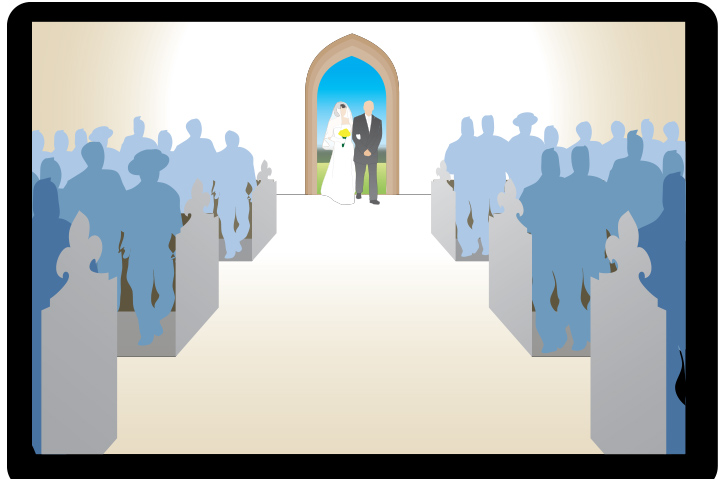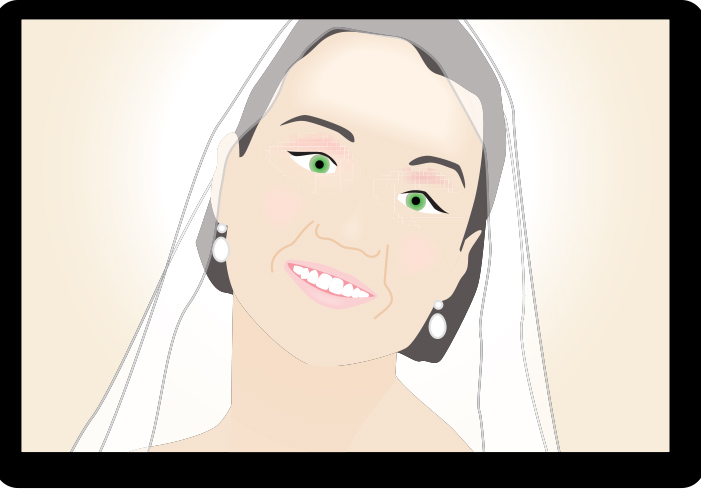Cheat sheet: shot sizes and shot types in film making
Add variety to keep things interesting when film making or shooting a video with different shot types and shot sizes

There’s nothing particularly difficult about shooting video your camera or phone. But there is a quantum leap between simply pressing the record button and creating something others will actually want to watch. Moviemaking is far from a straightforward craft – as a succession of images and sound have to be carefully woven together into a coherent narrative if you are going to avoid ending up with a dog’s dinner.
Videos have their own language – and although you may not realize it, you already know most of the grammar and conventions, thanks to the hours of television programmes and movies that we all sit and watch every week!
A video is made up of a sequence of ‘shots’ (the words, as it were, in the language of film). Each shot essentially lasts from when you press the record button to when you stop recording. These shots are then arranged into a sequence (or sentence), which shows the subject from a number of angles, and creates a visually interesting picture of what you are showing. You also need to think about the sound – particularly ambient sound and speech, as this must be recorded clearly, unless you are going to add music or other sound effects later.
Don’t keep the recording without pause for minutes on end. A good video is made up of a sequence of short recordings. Watch a TV documentary or movie, and you rarely have to wait more than half a minute before a new camera angle is used.
Different shot sizes
To avoid a noticeable on-screen jump in the image, you should change the camera angle, subject distance and the zoom setting between each shot. This will also provide visual variety.
If you are shooting a family outing, for instance, don’t just settle for long shots that neatly frame full figures in the height of the frame. Use an extreme long shot, which shows people as ants on the horizon. Then in big close-ups, where the whole face fills the entire screen.
Here is a selection of commonly used types of shot, what they’re used for and how long they should ideally appear on screen:
The best camera deals, reviews, product advice, and unmissable photography news, direct to your inbox!

Extreme long shot (ELS)
A shot with people less than half the height of the frame. Often used as an establishing shot (see below). Detail is hard to see with an ELS, and these therefore typically last longer than most shots – for, say 30 seconds.

Long shot (LS)
You see people at full length – including the top of their heads and their feet. These are good for group shots, and for showing the environment surrounding them. Typically on screen for 20 seconds or so.

Mid shot (MS)
Perhaps the most popular shot in the videographer’s armory. This frames a person from the waist upwards – with a small gap above their head. Expect such shots to last from five to 15 seconds.

Close-up (CU)
A tight shot that frames the person to show their head and shoulders. This can show reaction shots (see Rule 5), and is useful for showing the identity of people. They last between five and ten seconds.

Big close-up (BCU)
Framed even tighter than a close-up, and used to show the eyes and lips of a person – or to another body part, such as the hands. Used for dramatic effect, and on screen for just two to five seconds.
Shot types in videomaking
Shooting a video is a bit like telling a story – and if you are not careful, the end result can be little more than a dull, droning monologue. Just as the best writing is punchy and to-the-point, you need to try to find interesting ways to keep the viewer involved and ensure they know what’s going on. Filmmakers regularly use certain types of shot with this point in mind. Ones to try out include:

The establishing shot
When you arrive at a new location, show a wide shot of the place. This could be an aerial view of your holiday destination shot with a drone – or the exterior of the hotel where the wedding reception’s being held.

The cutaway
These incidental shots, which show something away from the main story, are great for breaking up similar shots when editing. Record road signs, traffic hubbub, onlookers – anything to help develop the story. You will need to shoot lots of these - whether shooting a wedding, making a documentary, or directing a drama.

The reaction shot
Don’t just shoot the main characters; include shots of the bystanders too. A shot of children opening birthday presents can be interspersed with shots of doting grandparents, for example.

The over-the-shoulder shot
Shoot from behind a ‘character’ in your movie, and you see them and what they are looking at. This a variation of the POV (point-of-view) shot, which simply shows the character’s viewpoint.
Your film shot type cheat sheet
Read more:
Photography cheat sheets
Storyboarding: how, what and why
Best cameras for video
Best cameras for filmmaking
Best cine cameras
Best video editing laptops
Best video editing software

Chris George has worked on Digital Camera World since its launch in 2017. He has been writing about photography, mobile phones, video making and technology for over 30 years – and has edited numerous magazines including PhotoPlus, N-Photo, Digital Camera, Video Camera, and Professional Photography.
His first serious camera was the iconic Olympus OM10, with which he won the title of Young Photographer of the Year - long before the advent of autofocus and memory cards. Today he uses a Sony A7 IV, alongside his old Nikon D800 and his iPhone 15 Pro Max.
He is the author of a number of books including The Book of Digital Photography, which has been translated into a dozen different languages.
In addition to his expertise in photography and videomaking, he has written about technology for countless publications and websites including The Sunday Times Magazine, The Daily Telegraph, What Cellphone, T3 and Techradar.

